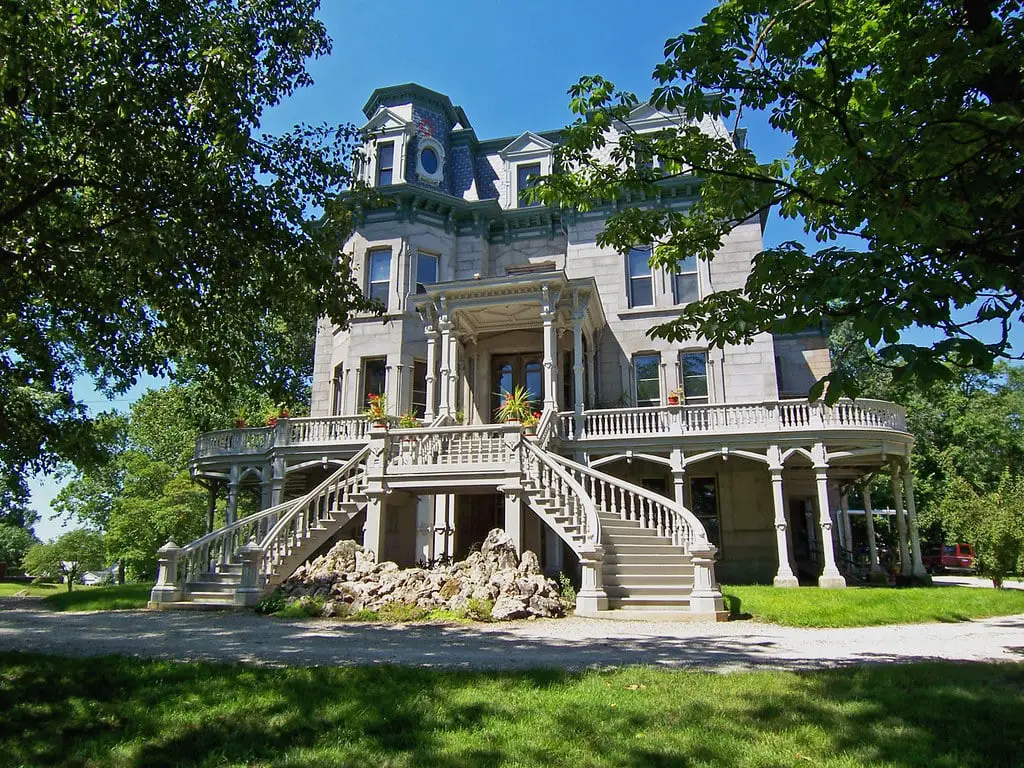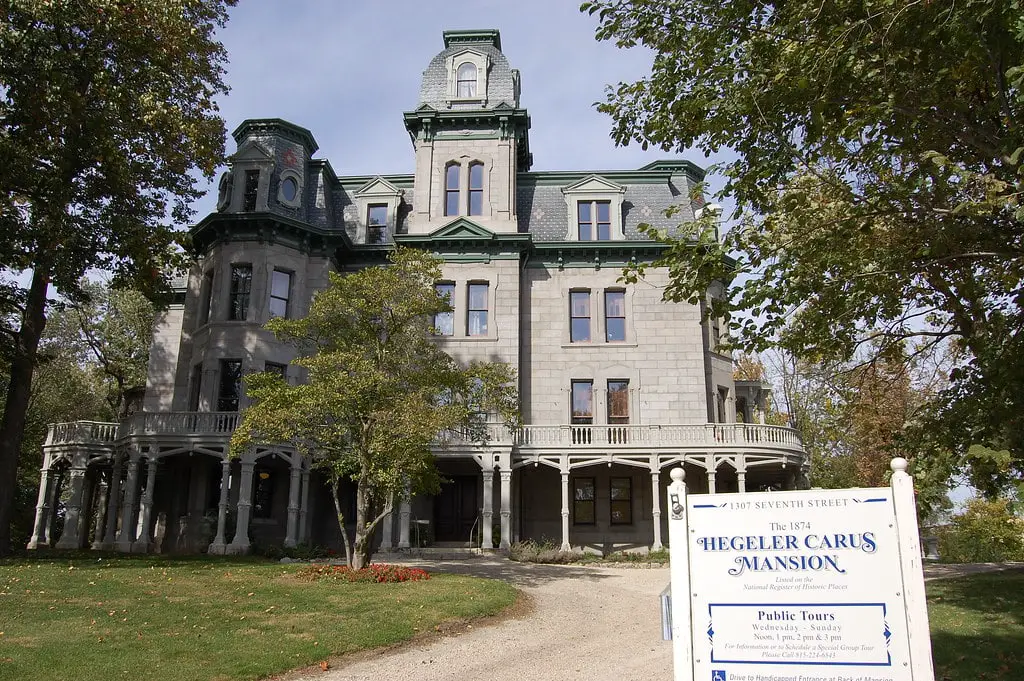The Historical Backdrop
Nestled in the heart of La Salle, Illinois, the Hegeler Carus Mansion is a testament to a bygone era. Constructed in 1876 for Edward C. Hegeler, a partner in the Matthiessen Hegeler Zinc Company, the mansion has seen the rise and fall of industrial fortunes.
Designed by William W. Boyington, a renowned Chicago architect, the mansion was completed in 1876 and has been a cornerstone of La Salle’s history ever since.
Edward Hegeler and his family were more than just wealthy industrialists; they were visionaries who saw the potential in La Salle’s burgeoning zinc industry. The mansion initially served as a home for Hegeler, his wife Camilla, and their large family. Over the years, the estate has witnessed significant historical events and changes, making it a living archive of the past.
The mansion was added to the National Register of Historic Places in 1995 and was designated a National Historic Landmark in 2007. These accolades serve as a reminder of the mansion’s enduring significance, not just to La Salle but to the nation as a whole.
Architectural Brilliance
The Hegeler Carus Mansion is a marvel of Second Empire architecture, a style characterized by grandiosity and intricate details. William W. Boyington, the architect behind this masterpiece, is known for other iconic structures like the Chicago Water Tower and the Joliet State Penitentiary.
The mansion’s interior was designed by August Fiedler, who created unique parquet floors and hand-painted ceilings for each public room. With seven levels and 57 rooms, the mansion covers about 16,000 square feet of interior space. Each room showcases architectural ingenuity, from the intricate woodwork to the elaborate fireplaces.
The mansion’s design elements are not just aesthetically pleasing but also functional. For example, the villa features a gymnasium, considered a unique surviving example of a late 19th-century turnverein-style physical culture facility. This blend of form and function makes the mansion a true architectural gem.

The Carus Family and Open Court Publishing
In 1887, Edward Hegeler launched the Open Court Publishing Company to provide a platform for discussions on philosophy, science, and religion. He hired Dr. Paul Carus, a German scholar, as the managing editor. Carus eventually married Hegeler’s daughter, Mary, who was the first woman to graduate from the University of Michigan with a degree in engineering.
The mansion became the birthplace of over 70 books and countless articles, thanks to Carus’ prolific writing. He also served as the editor of two scholarly publications, The Open Court and The Monist. The publishing company attracted contributions from eminent scholars like Charles Sanders Peirce, William James, and Leo Tolstoy.
Mary Hegeler Carus took over the Matthiessen Hegeler Zinc Company after her father’s passing and managed part of Open Court. She lived in the mansion until she died in 1936, and the house remained occupied mainly by their children until 2004.

A Walk Through the Hegeler Carus Mansion
Visiting the Hegeler Carus Mansion is like stepping back in time. Each room tells a story, from the grand drawing rooms to the cozy library. The mansion also houses the Zenith Radio Labs, a significant part of La Salle’s industrial history.
The mansion’s gymnasium is particularly noteworthy. It was part of a project launched in 2008 to reassemble the mansion’s original gymnasium and apparatus. This makes it a unique surviving example of a late 19th-century physical culture facility.
The mansion is not just a static monument; it’s a living, breathing entity. It hosts numerous public programs and is open for public tours. Visitors can marvel at the high Victorian stencils, wall and ceiling paintings, and intricate woodwork that adorn the mansion.

Preservation Efforts
The Hegeler Carus Foundation was created in 1995 to oversee the mansion’s preservation. Over the years, members of the Carus family and others have invested time and resources into restoring the estate to its former glory.
2007, the mansion was designated a National Historic Landmark, further cementing its importance. The foundation also owns the Julius W. Hegeler I House, located directly across the street, undergoing restoration.
Preserving a historical landmark like the Hegeler Carus Mansion is no small feat. It requires a concerted effort from the community, the foundation, and other stakeholders. Grants and donations are crucial in ensuring the mansion remains a part of La Salle’s rich history.

In the News
In August 2022, a 1926 Pierce-Arrow luxury car, initially owned by Elizabeth Carus, was returned to the mansion, adding another layer to its rich history.
As of June 8, 2023, the mansion took a ceremony to appreciate its volunteers. This event underscores the community’s active involvement in preserving this historical landmark.
The mansion also hosts various events, like the Summer Concert 2023. These events entertain and educate the public about the mansion’s historical and cultural significance.

Conclusion
The Hegeler Carus Mansion is more than just a building; it symbolizes La Salle’s rich history and cultural heritage. Its walls have witnessed the ebb and flow of time, and its rooms have hosted discussions that have shaped modern thought. As the mansion stands tall, it serves as a reminder of the importance of preserving such historical landmarks for future generations.
